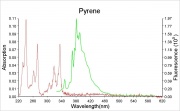Carbon tetrachloride
Description
A colorless, volatile liquid with a sweet, distinctive odor. Carbon tetrachloride was first produced in 1839 in Germany. It was used for many years to dissolve waxes, fats, and degrease metals. It was also a popular dry cleaning solvent and spot remover, however it is no longer widely used because of its toxicity. Carbon tetrachloride was once used as a single component fumigant and as a component in funigamt mixtures (Dowfume 75). Carbon tetrachloride was also used for a while in fire extinguishers (Pyrene), but was discontinued because it decomposed in high heat to form Phosgene, a highly poisonous gas.
Synonyms and Related Terms
tetrachloromethane; tetrachlormethane; perchloromethane; tetrachlorocarbon; Carbona; Pyrene
Other Properties
Miscible in ethanol, benzene, chloroform, ether, carbon disulfide, ligroin.
Insoluble in water at room temperature. At elevated temperatures, carbon tetrachloride can slowly react with water to form hydrochloric acid.
| Composition | CCl4 |
|---|---|
| CAS | 56-23-5 |
| Melting Point | -23 |
| Density | 1.589 |
| Molecular Weight | mol. wt. = 153.8 |
| Refractive Index | 1.4607 |
| Boiling Point | 76.7 |
Hazards and Safety
Nonflammable. Forms phosgene in electrical fires, high heat or ultraviolet light.
Very toxic by inhalation, ingestion and skin absorption. Carcinogen and teratogen in both males and females. LINK: International Chemical Safety Card
Comparisons
Authority
- R. J. Gettens, G.L. Stout, Painting Materials, A Short Encyclopaedia, Dover Publications, New York, 1966 Comment: sp. grav. = 1.629
- G.S.Brady, Materials Handbook, McGraw-Hill Book Co., New York, 1971 Comment: p. 147
- Reed Kay, The Painter's Guide To Studio Methods and Materials, Prentice-Hall, Inc., Englewood Cliffs, NJ, 1983
- Ralph Mayer, A Dictionary of Art Terms and Techniques, Harper and Row Publishers, New York, 1969 (also 1945 printing)
- Richard S. Lewis, Hawley's Condensed Chemical Dictionary, Van Nostrand Reinhold, New York, 10th ed., 1993
- Stephen R. Edwards, Bruce M. Bell, Mary Elizabeth King, Pest Control in Museums: a Status Report 1980, Association of Sytematics Collections, Washington DC, 1980
- Lynda A. Zycherman, J.Richard Schrock, A Guide to Museum Pest Control, FAIC and Association of Systematics Collections, Washington DC, 1988
- Michael McCann, Artist Beware, Watson-Guptill Publications, New York City, 1979
- Matt Roberts, Don Etherington, Bookbinding and the Conservation of Books: a Dictionary of Descriptive Terminology, U.S. Government Printing Office, Washington DC, 1982
- Van Nostrand's Scientific Encyclopedia, Douglas M. Considine (ed.), Van Nostrand Reinhold, New York, 1976
- Random House, Webster's Encyclopedic Unabridged Dictionary of the English Language, Grammercy Book, New York, 1997
- The Merck Index, Martha Windholz (ed.), Merck Research Labs, Rahway NJ, 10th edition, 1983 Comment: entry 1864
- The American Heritage Dictionary or Encarta, via Microsoft Bookshelf 98, Microsoft Corp., 1998
- Website address 1 Comment: conservation termlist at www.hants.org.uk/museums (accessed 2001)
